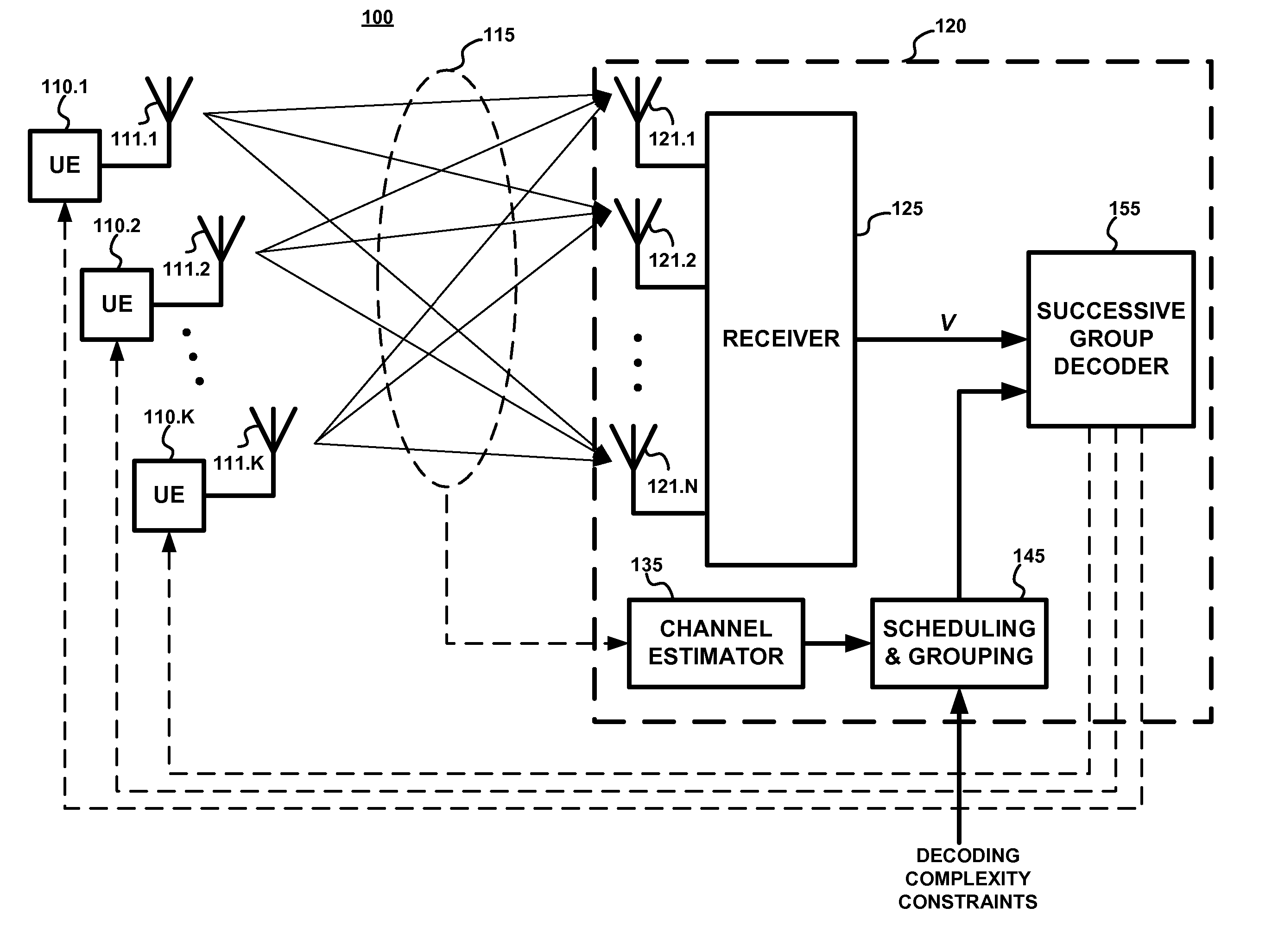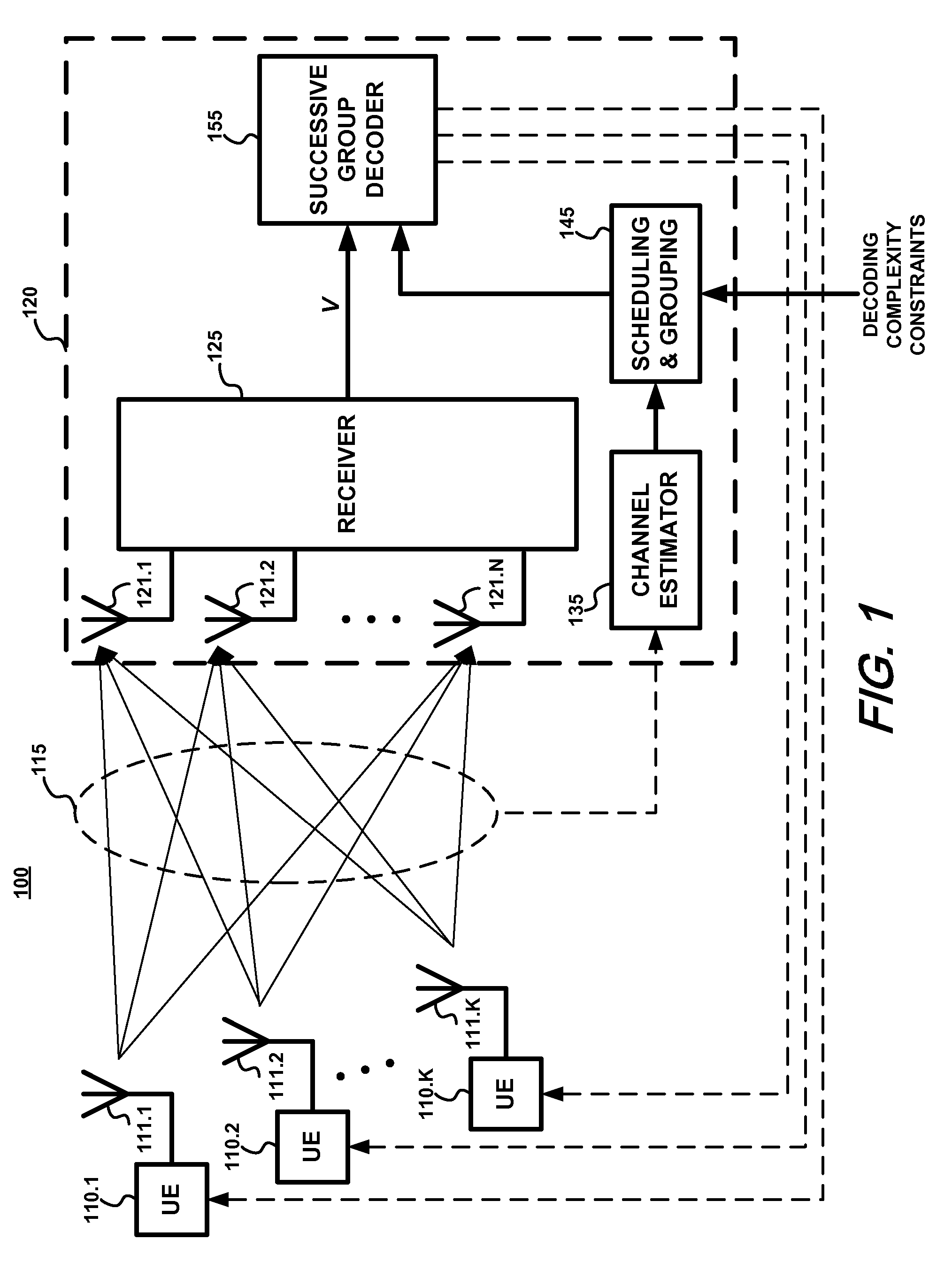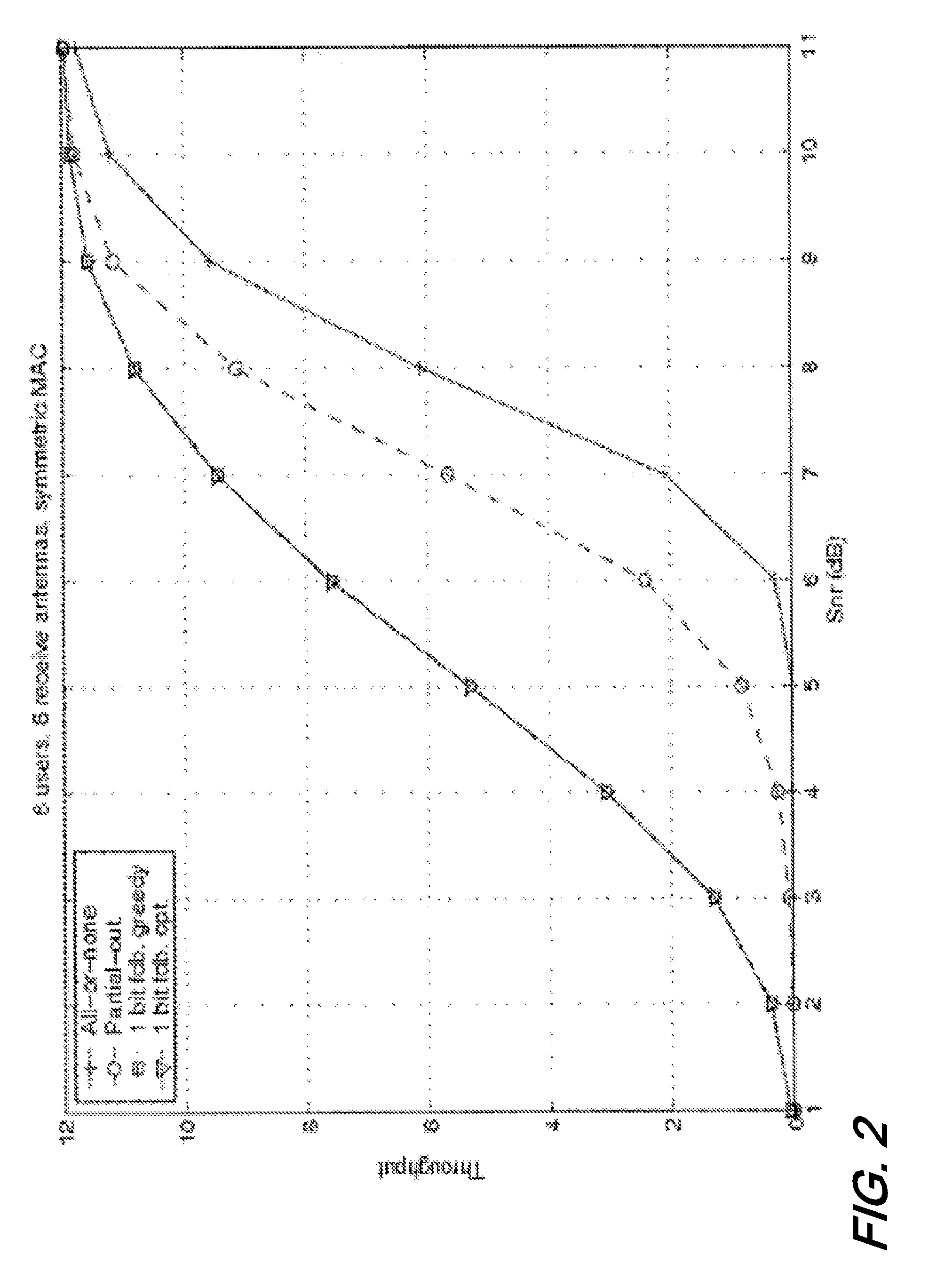Joint scheduling and grouping for sdma systems
a sdma system and joint scheduling technology, applied in the field of wireless communications, can solve the problems of increasing throughput, practicably feasible complexities, and reducing throughput, and achieve the effects of reducing complexity, substantial throughput improvement, and negligible loss of throughpu
- Summary
- Abstract
- Description
- Claims
- Application Information
AI Technical Summary
Benefits of technology
Problems solved by technology
Method used
Image
Examples
Embodiment Construction
1 Introduction
[0031]FIG. 1 provides a schematic representation of a communications system 100 comprising an SDMA uplink channel. The system 100 comprises one or more user equipment (UE)110.1-110.K, and a base station 120. Each UE 110 has a transmitting antenna 111 and the base station 120 has multiple receiving antennas 121.1-121.N coupled to a receiver 125. The base station 120 also includes a channel estimator 135, a scheduling and grouping element 145, and a successive group decoder (SGD) 155. The system employs a scheduling and grouping technique in accordance with an exemplary embodiment of the present invention to be described in greater detail.
[0032] As shown in FIG. 1, one or more feedback channels may be provided from the base station 120 to the one or more UE 110. In existing systems, any such feedback channels are typically limited in bandwidth. The absence of feedback channels results in an open- loop system. In an exemplary open-loop SDMA system, the UE transmit usin...
PUM
 Login to View More
Login to View More Abstract
Description
Claims
Application Information
 Login to View More
Login to View More - R&D
- Intellectual Property
- Life Sciences
- Materials
- Tech Scout
- Unparalleled Data Quality
- Higher Quality Content
- 60% Fewer Hallucinations
Browse by: Latest US Patents, China's latest patents, Technical Efficacy Thesaurus, Application Domain, Technology Topic, Popular Technical Reports.
© 2025 PatSnap. All rights reserved.Legal|Privacy policy|Modern Slavery Act Transparency Statement|Sitemap|About US| Contact US: help@patsnap.com



